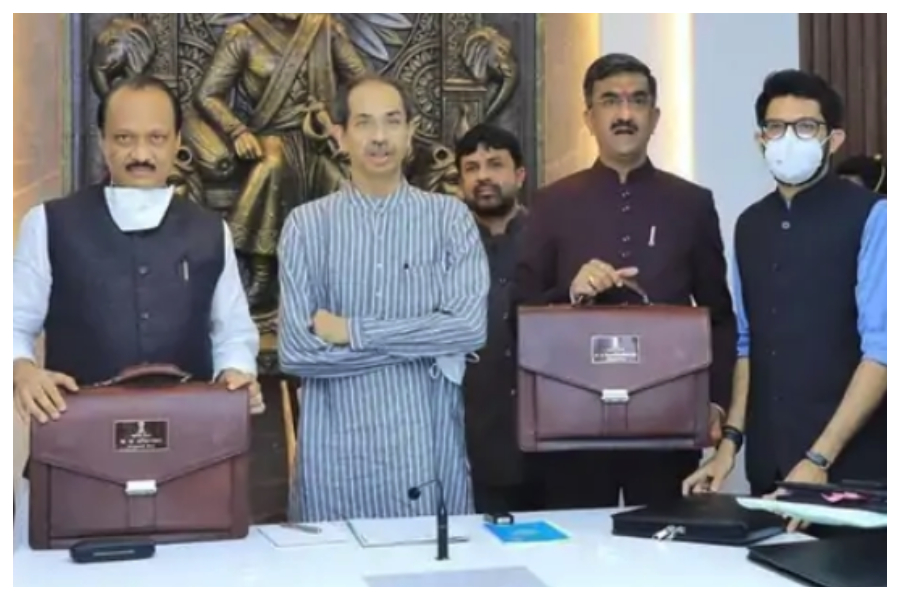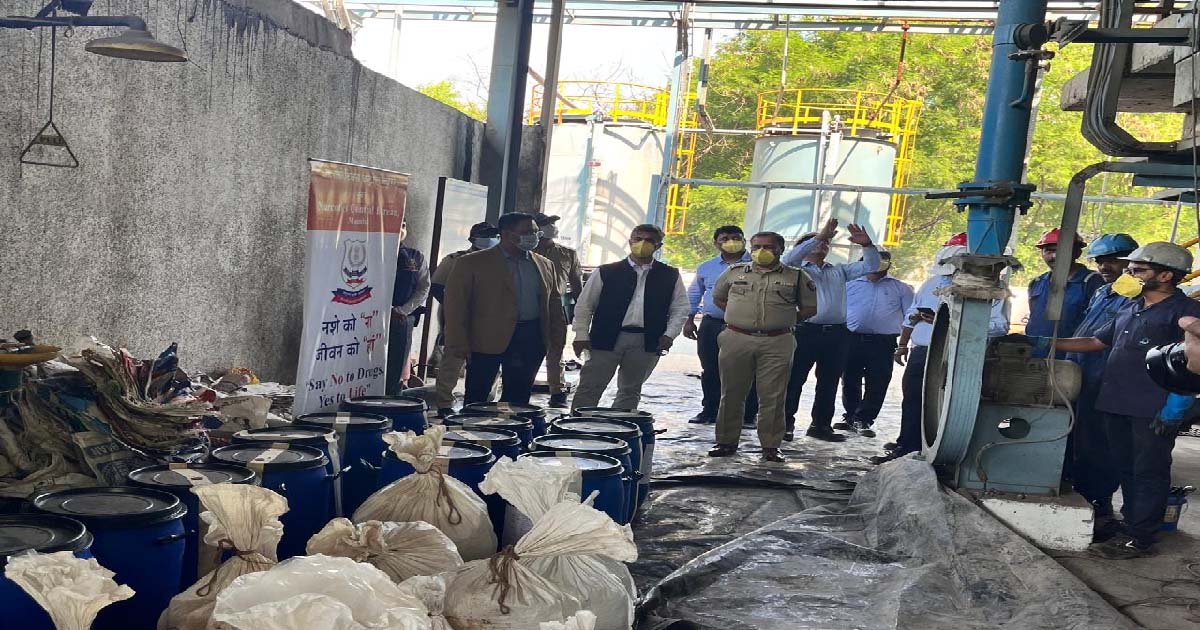Maharashtra
Maharashtra Budget: African Safari coming up in Nagpur

In a significant step, Maharashtra plans to set up an African Safari Project in Nagpur with an outlay of Rs 100 crore, besides tiger and leopard safaris, Deputy Chief Minister and Finance Minister Ajit Pawar said here on Friday.
Presenting the state Budget 2022-2023 in the Assembly, Pawar announced a series of tourism-related projects in the state.
“The government intends to conduct the country’s first experiment to display wildlife from the African continent. For this, an African Safari is proposed at the Balasaheb Thackeray Gorewada International Zoological Park,” he said.
Besides, there are plans for a Tiger Safari on a 171-acre jungle in Chandrapur and a Leopard Safari in Pune, on a 90-hectare forest at a cost of Rs 60 crore, on the lines of similar ones in Rajasthan, Madhya Pradesh and Karnataka, and a Wildlife Rescue Centre in Chandrapur.
Pawar said detailed proposals are being sent to UNESCO to declare Chhatrapati Shivaji Maharaj’s forts and his guerrilla warfare as World Heritage.
On the tourism front, he announced a water tourism project of Rs 50 crore in the Shivsagar reservoir, Satara, near the Koyna Dam, with similar projects at Gosikhurd in Bhandara and Jayakwadi in Aurangabad.
Pawar announced an aintegrated development plan for the UNESCO World Heritage sites of Ajanta-Ellora Cave temples comprising a modern convention centre and other facilities.
Grants shall be provided for development of tourist sites in Jawhar in Palghar, Fardapur in Aurangabad, the popular hill-stations of Lonavala in Pune and Mahabaleshwar in Satara.
The government will provide Rs 100 crore during 2022-2023 for development of Raigad Fort and its vicinity, Rs 14 crore for Rajgad, Torna, Shivneri, Sudhagad, Sindhudurg, and Vijaydurg forts, and Rs 7 crore for the preservation of Sewri Fort and St. George Fort in Mumbai.
Giving a major boost to infrastructure development, the government will provide Rs 7,500 crore for 10,000 kms roads under the Mukhya Mantri Gram Sadak Yojana-II, and launch 6,550 kms roads under the Pradhan Mantri Gram Sadak Yojana-III.
The Hindu HridaySamrat Balasaheb Thackeray Super Expressway connecting Mumbai-Nagpur, which is 75 per cent complete, will be extended till Bhandara-Gondiya-Gadchiroli.
Pawar also announced sanction of the Rs 16,000 crore Nashik-Pune medium high speed railway project, and a network of more Metro lines in Pune.
The upcoming Mumbai Metro (3) from SEEPZ-Bandra-Colaba will be extended southwards to Navy Nagar.
Pawar said Maharashtra State Road Transport Corporation will get 3000 new eco-friendly buses and modernise 103 bus stands.
A new airport is under consideration for Gadchiroli, besides making provisions for the airports at Shirdi, Ratnagiri, Amravati and Kolhapur.
The MVA partners including Chief Minister Uddhav Thackeray, Eknath Shinde, Jayant Patil, Nana Patole and other leaders welcomed the budget as “growth and progress-oriented, all-encompassing and visionary” while the Opposition Bharatiya Janata Party’s Leaders of Opposition Devendra Fadnavis and Pravin Darekar and others slammed it as “disappointing and direction-less”.
Maharashtra
Byculla Redevelopment Site Accident Claims Two Lives

Mumbai: A tragic incident occurred on saturday afternoon at the proposed redevelopment site of Habib Mansion in Byculla (West). During piling work, the ground suddenly caved in, resulting in the death of two labourers on the spot.
Two to three other workers suffered serious injuries and were rushed to a nearby hospital. The accident took place at the Sundar Galli stretch between Haines Road and Tank Pakhadi Road, where redevelopment work is being undertaken by Ibrahim Jusab Sopariwala & Others. The project is linked to architects A2 Associates and Rajpurkar Associates, with ZZ Consultants reported as the structural advisors.
Local residents claimed that adequate safety measures were missing at the worksite, raising concerns about negligence. Police and BMC officials have cordoned off the area and launched an investigation.
Authorities said a detailed probe will determine whether safety protocols were violated during the redevelopment work.
Maharashtra
NCB seizes city drugs, sets them on fire

Mumbai: The Mumbai Zonal Unit of the Mumbai Narcotics Control Bureau (NCB) has disposed of about 1835 kg of Mephedrone along with 341 kg of other substances which were seized from various places in Maharashtra and Delhi. 16 persons were arrested in this case. A thorough investigation into the massive drug seizure led to the arrest of several persons including foreigners from various places, resulting in the elimination of close associates of the drug peddlers with international links.
As per the guidelines prescribed by the Hon’ble Supreme Court, a high-level Drug Disposal Committee was constituted comprising Deputy Director General (SWR) of NCB, Additional Director, NCB Mumbai Zonal Unit and Additional Commissioner of Pune Police. The case was reviewed and it was selected to dispose of the drug hoard. Accordingly, all legal conditions were complied with after which the seized drugs along with other chemicals were finally destroyed by incineration in the presence of HLDCC on 14th November 2025 at Maple, Ranjangaon, Pune, Maharashtra.
This significant seizure of drugs followed by disposal of the sub-judices, indicates the continuous efforts of NCB in dismantling organised drug syndicates and targeting drug offenders who pollute the drug ecosystem. The Bureau is steadfast in its mission to protect public health and uphold the vision of “Nisha Mukt Bharat” by 2047.
NCB is firmly committed to ensuring a drug-free society under the guidance of which it has curbed drug trafficking, broken financial nexus and curbed inter-state and international drug syndicates.
Citizens are urged to play their role by reporting any information related to drugs through the MANS – National Narcotics Helpline (Toll Free Number: 1933). The identity of the informants is kept strictly confidential.
Maharashtra
Three men accused of robbing a youth have been arrested The main accused was apprehended in Titwala.

Mumbai: A young man returning home on a motorcycle in the Asalpha area of Ghatkopar was attacked and forcibly robbed by three men who brandished a chopper. A case was registered at the Ghatkopar police station under sections 309(4), 3(5) of the Indian Penal Code, sections 4, 25 of the Indian Penal Code, and sections 37(1) and 135 of the Indian Penal Code.
The complainant, Suraj Mahadev Dethe (24), and his friend, Yash Kamble, were passing near the Home Guard Training Center at approximately 1:30 a.m. on November 12th when three unidentified individuals in a three-wheeled tempo stopped them. The accused, using the chopper as a pointer, assaulted them, abused them, and stole their Honda Dio scooter and mobile phone.
As soon as the case was registered, the Assistant Commissioner of Police and Senior Police Inspector of the Ghatkopar Division inspected the scene. Based on technical and traditional investigations, the accused identified Hussain Aslam Memon, alias Genda. Upon receiving information that he was hiding in the Titwala area, the police apprehended him. During interrogation, he revealed the names of his accomplices – Munna Ramvilas Sharma and Dilshaduddin Sitabuddin Shaikh – who were subsequently arrested.
On November 13, the three accused were produced in court, where they were remanded to police custody until November 17. The investigation also revealed that Genda is a notorious criminal with more than 13 cases registered against him in various police stations.
-

 Crime3 years ago
Crime3 years agoClass 10 student jumps to death in Jaipur
-

 Maharashtra1 year ago
Maharashtra1 year agoMumbai Local Train Update: Central Railway’s New Timetable Comes Into Effect; Check Full List Of Revised Timings & Stations
-

 Maharashtra1 year ago
Maharashtra1 year agoMumbai To Go Toll-Free Tonight! Maharashtra Govt Announces Complete Toll Waiver For Light Motor Vehicles At All 5 Entry Points Of City
-

 Maharashtra1 year ago
Maharashtra1 year agoFalse photo of Imtiaz Jaleel’s rally, exposing the fooling conspiracy
-

 National News1 year ago
National News1 year agoMinistry of Railways rolls out Special Drive 4.0 with focus on digitisation, cleanliness, inclusiveness and grievance redressal
-

 Maharashtra1 year ago
Maharashtra1 year agoMaharashtra Elections 2024: Mumbai Metro & BEST Services Extended Till Midnight On Voting Day
-

 National News1 year ago
National News1 year agoJ&K: 4 Jawans Killed, 28 Injured After Bus Carrying BSF Personnel For Poll Duty Falls Into Gorge In Budgam; Terrifying Visuals Surface
-

 Crime1 year ago
Crime1 year agoBaba Siddique Murder: Mumbai Police Unable To Get Lawrence Bishnoi Custody Due To Home Ministry Order, Says Report












